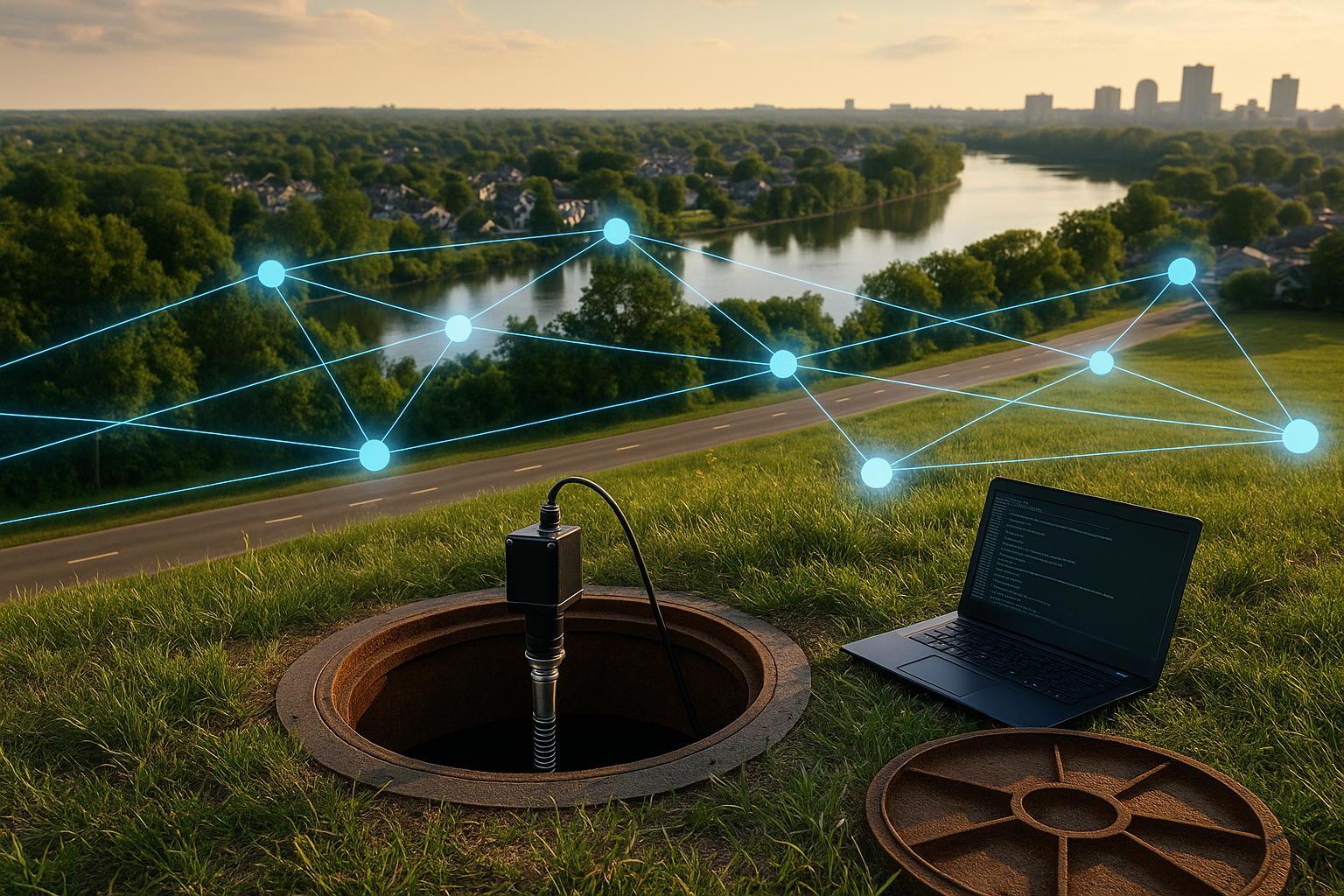New AI model revolutionizes urban water infrastructure with real-time forecasting

In a breakthrough that could reshape the way cities manage their underground infrastructure, researchers have developed a new artificial intelligence framework designed to predict and monitor the performance of urban water systems.
Their study, "AI-Driven Forecasting and Monitoring of Urban Water System," published at the NeurIPS 2025 Workshop on UrbanAI – Harnessing Artificial Intelligence for Smart Cities, introduces a spatiotemporal deep learning model that can detect leaks, forecast water flow, and enhance the efficiency of municipal wastewater and water distribution networks.
Rethinking urban water infrastructure through AI
Modern cities depend on extensive networks of underground pipelines that deliver clean water and carry away wastewater. Over time, these systems face serious challenges, from undetected leaks and blockages to aging infrastructure and inconsistent monitoring. Conventional methods rely heavily on dense sensor installations or manual inspections, both of which are costly and often fail to capture dynamic flow patterns.
The research team aims to solve this long-standing issue by designing HydroNet, a data-driven, graph-based neural network model capable of forecasting the behavior of entire water networks with limited sensor input. By merging hydraulic simulation data and machine learning, the system can estimate flow velocity and water depth throughout a city's pipeline network while identifying potential anomalies in real time.
HydroNet's design centers on a spatiotemporal graph neural network (GNN), which maps manholes as nodes and pipes as edges. Each edge is defined by physical attributes such as pipe length, diameter, material, and slope. These properties allow the model to understand how water moves through different sections of the network. The framework's temporal learning components capture changes in water flow and depth over time, while edge-aware message passing enables information transfer between connected nodes, a critical feature for identifying how a single event, such as a blockage or leak, can influence an entire subsystem.
The system is supported by a sparse network of SmartCover sensors strategically installed in key manholes. These sensors capture real-time measurements of flow velocity and water depth. To overcome the limitations of sparse data, the researchers augmented the real-world readings with hydraulic simulations, creating a comprehensive dataset that reflects the network's full behavior.
How HydroNet achieves unprecedented precision
The authors tested their model on the Real World Water (RWW) dataset, developed from a campus-scale wastewater system consisting of 23 manholes and 22 pipes. The dataset included 17,706 time steps of water depth and flow velocity data collected over several months. Despite using sensors at only five locations, HydroNet accurately predicted flow behavior across the entire network.
The research used autocorrelation and correlation analyses to examine flow dependencies and confirmed distinct daily and operational flow patterns. By understanding these temporal trends, the model learned to anticipate fluctuations tied to human activity, environmental conditions, and infrastructure design.
When benchmarked against six state-of-the-art forecasting models, including CaST, GMAN, STGCN, ST-SSL, and STG-MAMBA, HydroNet consistently achieved higher accuracy. It recorded a mean absolute error (MAE) of 0.0085 feet for water depth and 0.0038 cubic feet per second for flow velocity, outperforming all competing methods. This precision is vital for practical applications, as even small deviations in flow prediction can significantly affect maintenance planning and leak detection accuracy.
The model's key innovation lies in its integration of physical attributes directly into the AI learning process. Unlike traditional data-driven models that rely purely on statistical correlations, HydroNet's inclusion of pipe-level physical parameters ensures that its predictions remain physically consistent with real-world constraints. This hybrid design strengthens reliability, allowing utilities to trust AI-driven insights in operational decisions.
By minimizing the number of sensors required and relying on scalable algorithms, the framework also achieves exceptional cost-efficiency. Most existing systems require dense sensor networks for detailed monitoring, but HydroNet demonstrates that combining sparse sensing with AI and simulation can deliver comprehensive situational awareness without prohibitive installation costs.
Building smarter, sustainable cities with predictive water management
The implications of this research reach far beyond academic modeling. In many cities worldwide, water systems are among the oldest pieces of infrastructure, often operating unseen and under strain. Leaks, infiltration, and blockages can lead to massive water losses, environmental contamination, and costly emergency repairs. By enabling continuous, predictive oversight, AI models like HydroNet could drastically improve maintenance schedules, reduce repair costs, and strengthen resilience against infrastructure failures.
HydroNet's modular architecture makes it adaptable for both wastewater and freshwater distribution systems, offering flexibility for urban utilities of varying scales. For smaller cities or campuses, the model can function with minimal sensors, while larger municipalities can integrate it into existing supervisory control and data acquisition (SCADA) systems for real-time analytics.
The authors note that while HydroNet was tested on a relatively contained campus-scale system, its principles are designed for scalability. With proper calibration, it could be deployed in large metropolitan networks that span thousands of kilometers of pipelines. However, scaling up will require reliable access to infrastructure metadata, including accurate records of pipe geometry, material, and installation history, as well as consistent sensor calibration.
Besides monitoring, HydroNet offers opportunities for forecasting and preventive planning. Its predictive capabilities allow city managers to simulate how upcoming weather events, increased demand, or operational adjustments will affect network performance. This level of foresight supports proactive maintenance rather than reactive intervention, leading to smarter resource allocation and reduced operational risk.
The researchers acknowledge that future work will focus on integrating environmental variables such as rainfall, soil moisture, and temperature to further improve model robustness. Additionally, expanding datasets from multiple urban contexts will enhance the model's ability to generalize across diverse infrastructure types and environmental conditions.
- FIRST PUBLISHED IN:
- Devdiscourse









